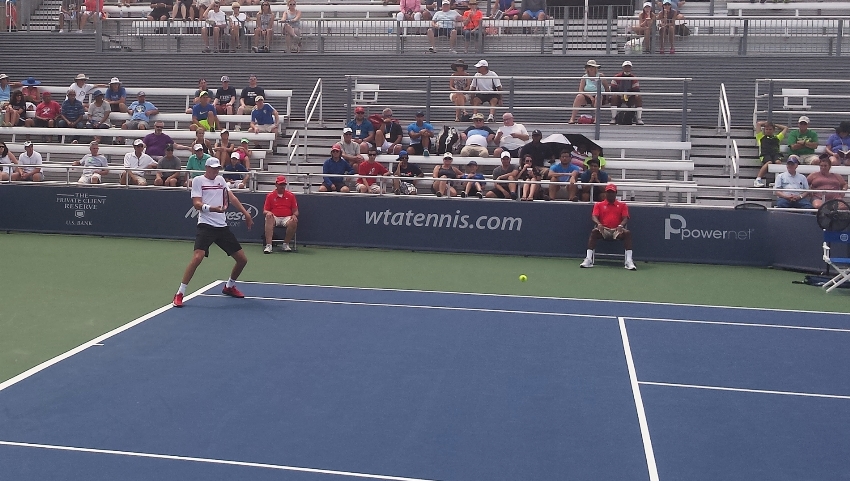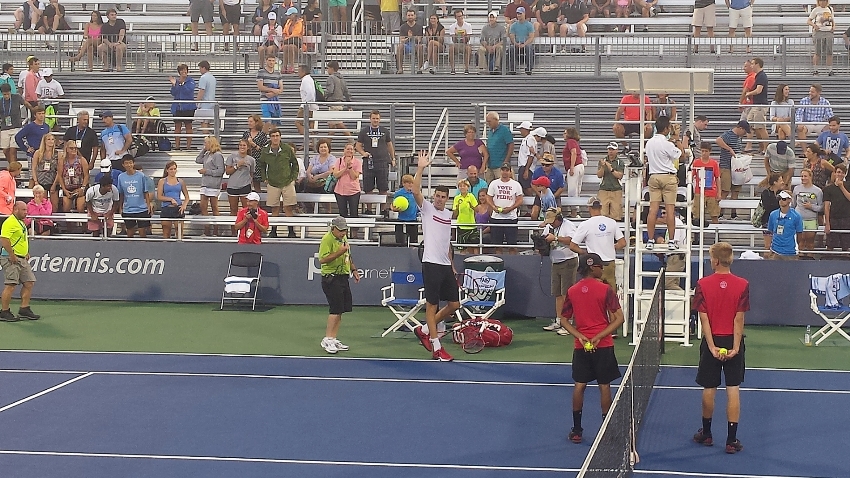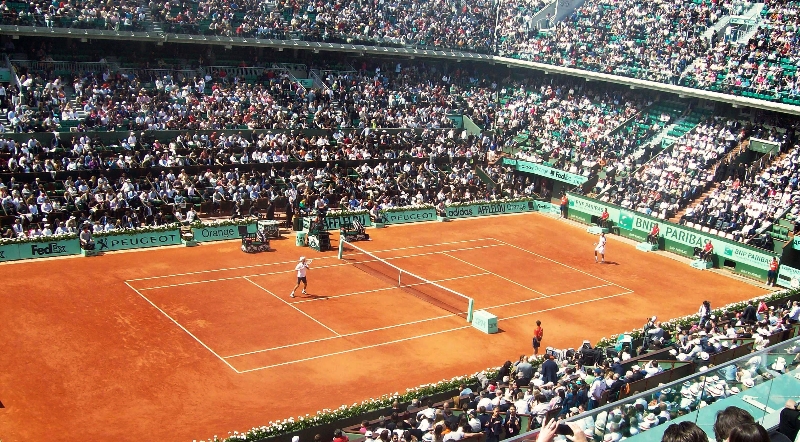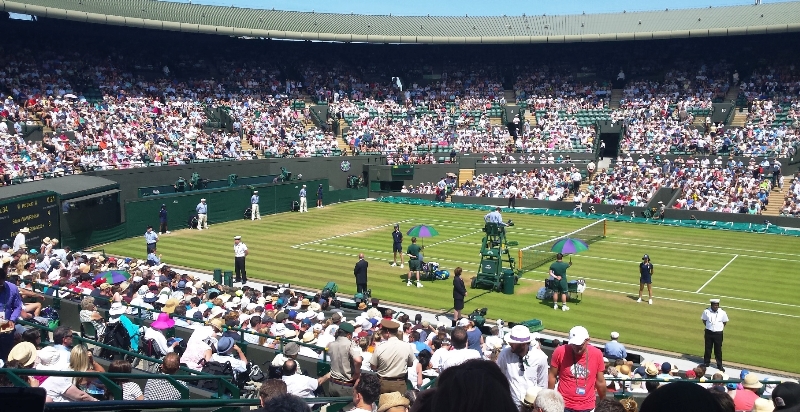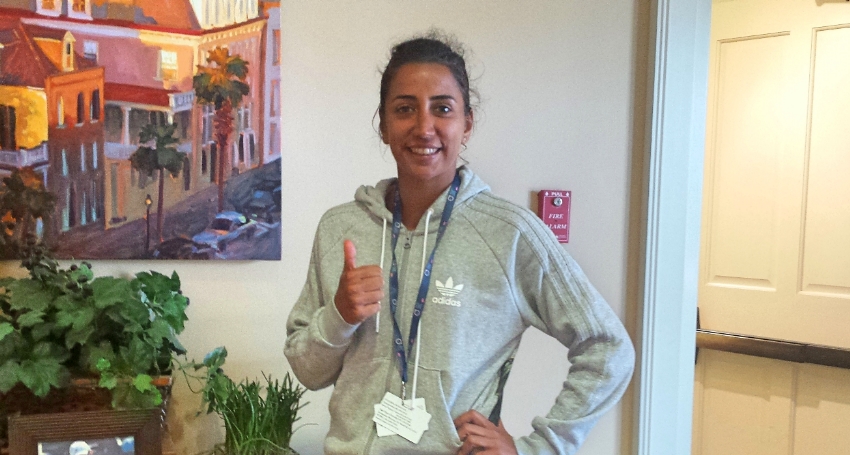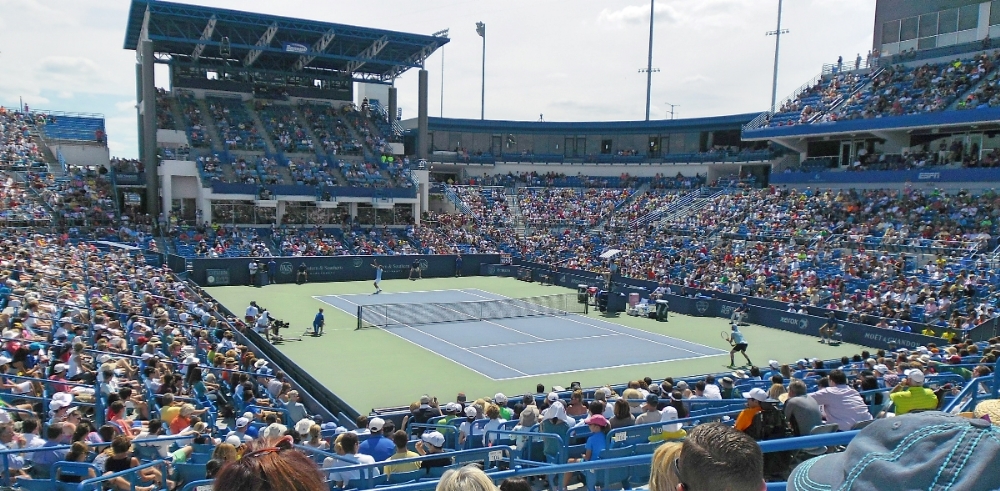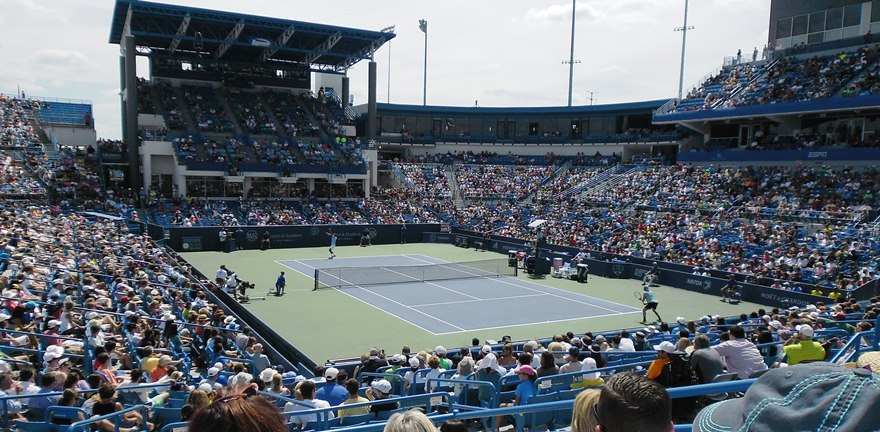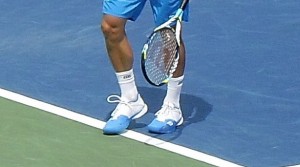Reilly Opelka is a big guy at 6’11, but that is not what the title of this article foregrounds. Today, in the Western & Southern Open in Cincinnati, the 2015 Wimbledon Boys’ champion passed a remarkable test against Jérémy Chardy, an established top-50 player who has reached 4th round or better at all the 4 Majors throughout his career. For the 18-year-old Opelka who has recorded his first ATP-Tour win earlier this month in Atlanta, today’s 3-6 7-5 7-6(9) win over the Frenchman was the confirmation that he is, at this point, a considerable opponent at any stage of an ATP event. It’s true that earlier this month, he did beat the 28th-ranked Kevin Anderson – who is still recovering from injury and struggling to find his best form – and the 53rd-ranked Donald Young in Atlanta before losing to John Isner in three sets in the semifinals. That being said, today’s win proved that the Atlanta run was not an isolated performance and that the American will quickly improve on his current ranking of 364 from this point forward.
When today’s match started and Chardy broke Opelka’s serve immediately in the second game of the match, it looked like the American Wild Card recipient would gain some valuable experience but not much more. While Opelka is already known for his big serve, it was Chardy’s serve that stole the show as the Frenchman served 22 aces and 3 double faults to Opelka’s 18 and 9 respectively. Opelka also served at 56% first serves while Chardy did so at 64%. What most tennis fans did not expect was how Opelka rose to the challenge in other parts of the game.
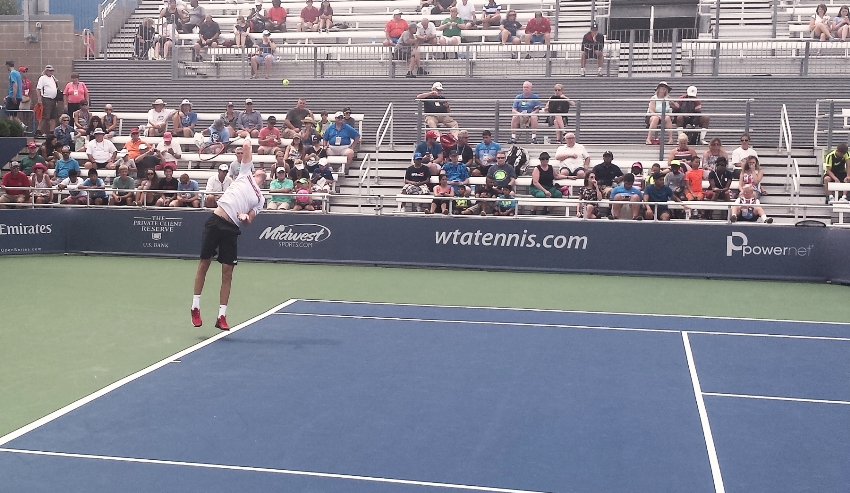
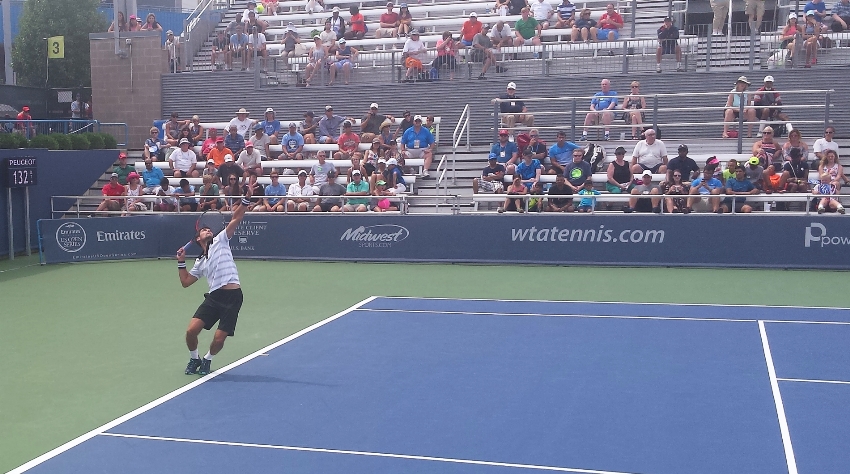
Opelka steadied the ship after the early break and never lost his serve during the rest of the match. But it was impossible to break Chardy’s serve. The Frenchman, time after time, served aces and kept Opelka off balance with strong serves into the body including the one he hit (photo below) to win the first set 6-3.
But Opelka was now also winning his service games without much difficulty. The only other break of the match came when the rain interrupted the 6-5 game in the second set when Chardy was about to serve at 30-30. That delay lasted less than an hour and the players came back on the court, but during the warm-up, the weather forecast apparently signaled lightning and the referee made the following rare announcement: “Ladies and gentlemen, we have a big lightning coming this way, we are sending the players back to the locker room.” The so-called “lightning delay” lasted over an hour. The skies turned into a nasty, gray-blue toned color, and a period of heavy rain followed.
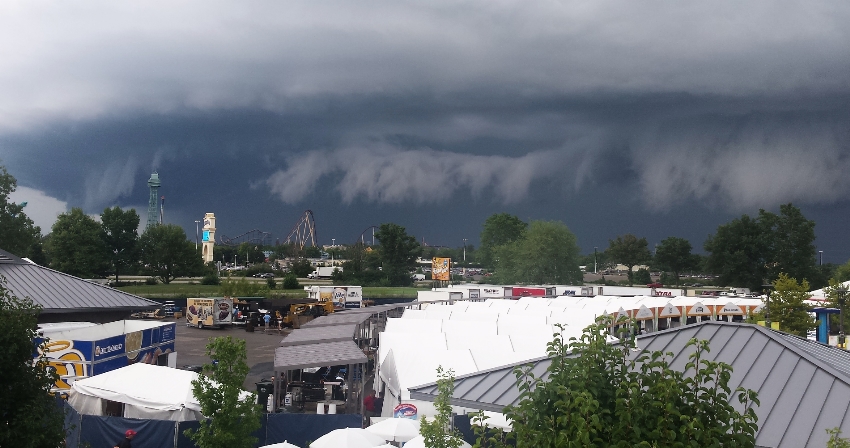
During this time, Opelka had a Chobani yoghurt as he waited in the dining room. I don’t know what Chardy did but the delay certainly did not work in his favor. As is often the case when a match gets interrupted at such crucial moments, when the players come back to the court, it is possible that one or both players may not have the intensity or the concentration with which they left the court at a moment like 6-5 30-30. Chardy was the victim this time. What looked like a typical “tiebreaker set” before the weather delay finished in about a minute when Opelka quickly won the first two points and recorded his only break of the match to win the second set 7-5.
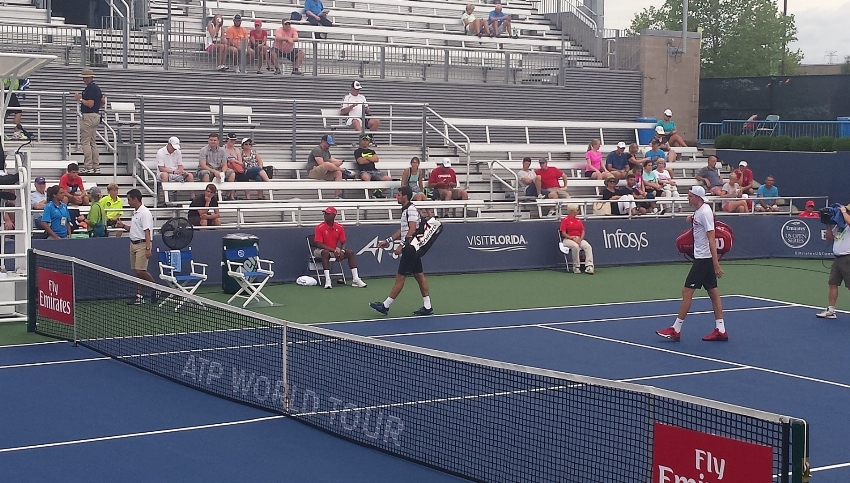
In the third set, the domination of the servers continued and the second set pattern repeated itself, this time without a delay to throw off either player. In the deciding tiebreaker, Opelka excelled in his decision-making and showed the poise of a player far beyond his years. The match was decided on the tiniest of details. Opelka was willing to take chances and develop patterns to put pressure on Chardy while the Frenchman hesitated on a couple of important points.
The tiebreaker, as it happened
Opelka started the tiebreaker with a successful serve-and-volley point to win the first point. After Chardy hit his signature forehand winner on a short return by Opelka, the American made the first minibreak on a strong return when Chardy hit a kick second serve to his backhand. In the next point, Opelka approached Chardy’s backhand on the first short-ball opportunity, causing the Frenchman to net the passing-shot attempt. Opelka was now up 3-1, but he missed an open-court backhand to record his first big error in the tiebreaker. Another powerful serve by Chardy equalized the score at 3-3 and the players changed ends. In the next point, Chardy had another shot at a forehand winner when he moved into the court on a short ball by Opelka. However, the Frenchman hesitated and instead of going for the usual winner, he simply hit it deep to Opelka’s backhand and allowed him to stay in the point. He paid the price for his reluctance as Opelka slowly gained control of the rally and finished it with a winner of his own. The youngster was up again, holding a minibreak at 4-3. He made his second (and last) unforced error of the tiebreaker when he netted a forehand. The players were back on serve at 4-4.
In the next point, Opelka attacked Chardy’s backhand for the second time in the tiebreaker and Chardy once again missed the passing shot in the net. The Frenchman was down 4-5 but would win the next two points with an ace and a string of dominating forehands to earn his first match point. At 6-5 up, when Chardy hit a powerful return on Opelka’s serve (which is not an easy thing to do) it looked like he would shortly shake hands and go to the locker room as the winner. Yet, Opelka produced a sizzling down-the-line winner off that return with his supposedly weaker backhand side and the players changed sides again at 6-6. Opelka served and volleyed again, this time on his second serve and won the point the classic way, with a winning volley. Now the American held his first match point at 7-6. Chardy was not yet done as he produced two big serves that earned one return mistake and another short return by Opelka, allowing Chardy to hit the winner on the next shot. The Frenchman was up 8-7 with his second match point in hand. Opelka once again rose to the occasion, sticking to the successful pattern that was emerging in the late stages of the match. He served and volleyed yet one more time, this time winning the point on a high forehand volley and saving the match point. At 8-8, Opelka, recognizing that bravery was the path to the win, approached Chardy’s backhand for the third time forcing him to miss the passing shot in the net, again. Chardy saved the second match point against him when he hit a kick serve to Opelka’s backhand and the big American missed the return long. The players changed sides for the third time at 9-9.
In this intense back-and-forth battle, it was the more experienced player that blinked first in the “extended” stages of the tiebreaker. On the 9-9 point, Chardy got another short ball in the middle of the court on his forehand. Usually considered Chardy’s “money shot,” the short forehand sitter let him down a second time in the tiebreaker (first one at 3-3, see above), this time resulting in a direct error in the net. Opelka held his third match point at 10-9, on his serve. As the saying goes, you stick with what got you there. Opelka had been successful serving and volleying or approaching the net to Chardy’s backhand. Sure enough, he did the latter as soon as the opportunity presented itself in the rally. This time, Chardy did hit the passing shot down-the-line over the net, but the tall American was able to reach it and place the cross-court forehand volley to the open court for a winner, ending the tiebreaker with an 11-9 win. He turned to his corner and screamed with joy. His sense of accomplishment was obvious in his face, and Chardy was disappointed as he added to his struggling year another unexpected loss.
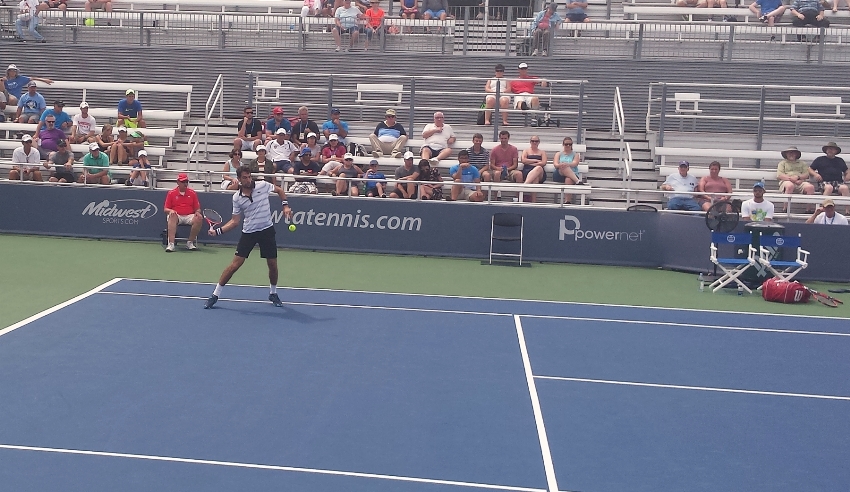
Opelka manifested the qualities that competitive players possess during crunch time. He was able to recognize the winning patterns, dare to take chances to put them into action, and execute without fear, realizing that there would always be a chance that it may blow up in his face. He did it whether he was down or up a match point. The bottom line remained that he knew he needed to take those risks, in the form of serving and volleying or approaching to Chardy’s backhand. It was a remarkable display of high-IQ for a player who was performing in the main draw of an ATP-1000 event for the first time in his nascent professional career. It was his opponent, with 11 years of pro experience, who got hesitant with his most powerful weapon while the American became a giant with his decision-making. I am also a fan of Chardy and I believe his career is very underrated, but there is no denying that the 18-year-old stole the show today and made an Opelka fan out of me.

